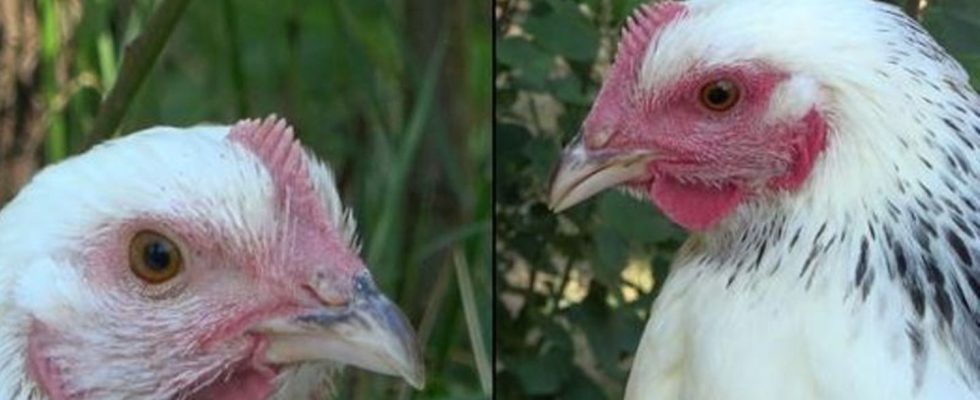experiment
Blushing when excited – this also happens to chickens
According to the information, the left hen is in a resting state and therefore her face is only slightly red. On the right you can see a very red face after the chicken has had a negative experience. photo
© INRAE - Bertin and Arnould/EurekAlert/dpa
Who doesn’t know it: you get upset, nervous or ashamed – and blush. According to a new study, chickens feel the same way. This could also have an impact on animal welfare.
In the experiment, six domestic chickens (Gallus gallus domesticus) were observed in a large enclosure in the Loire Valley over three weeks and filmed in various situations, such as when they were fed or caught. The degree of redness on the face was then measured using image software. The result: According to the researchers, the chickens’ faces turned red to varying degrees depending on their emotional state. When they were given appetizing food, they only blushed a little. But if they had a negative experience and were caught, the animals’ faces would turn scarlet. When at rest, however, the animals’ skin was reportedly much lighter.
Getting used to people?
On this basis, researchers led by Aline Bertin and Cécile Arnould from INRAE examined the relationship between humans and animals. They gradually accustomed 13 hens to the presence of an experimenter over five weeks. In contrast to other hens that were not habituated to a human, the first group retained a lighter skin color in the presence of the experimenter. According to the information, this could indicate that they perceive people more positively than the chickens that have not previously been accustomed to a person.
This research has opened up new perspectives on the expressions of chickens, it said. These included, for example, the movement of the head feathers, but also how the color of the chicken’s face changes when playing, when frustrated or in social interaction.

